Add your feed to SetSticker.com! Promote your sites and attract more customers. It costs only 100 EUROS per YEAR.
Pleasant surprises on every page! Discover new articles, displayed randomly throughout the site. Interesting content, always a click away
Solidus
Your circular packaging partnerSolidus Coevorden Solid Board achieves CarbonNeutral® product certification 27 Mar 2025, 2:17 pm
Solidus takes a major step in carbon neutral packaging with CarbonNeutral® product certification
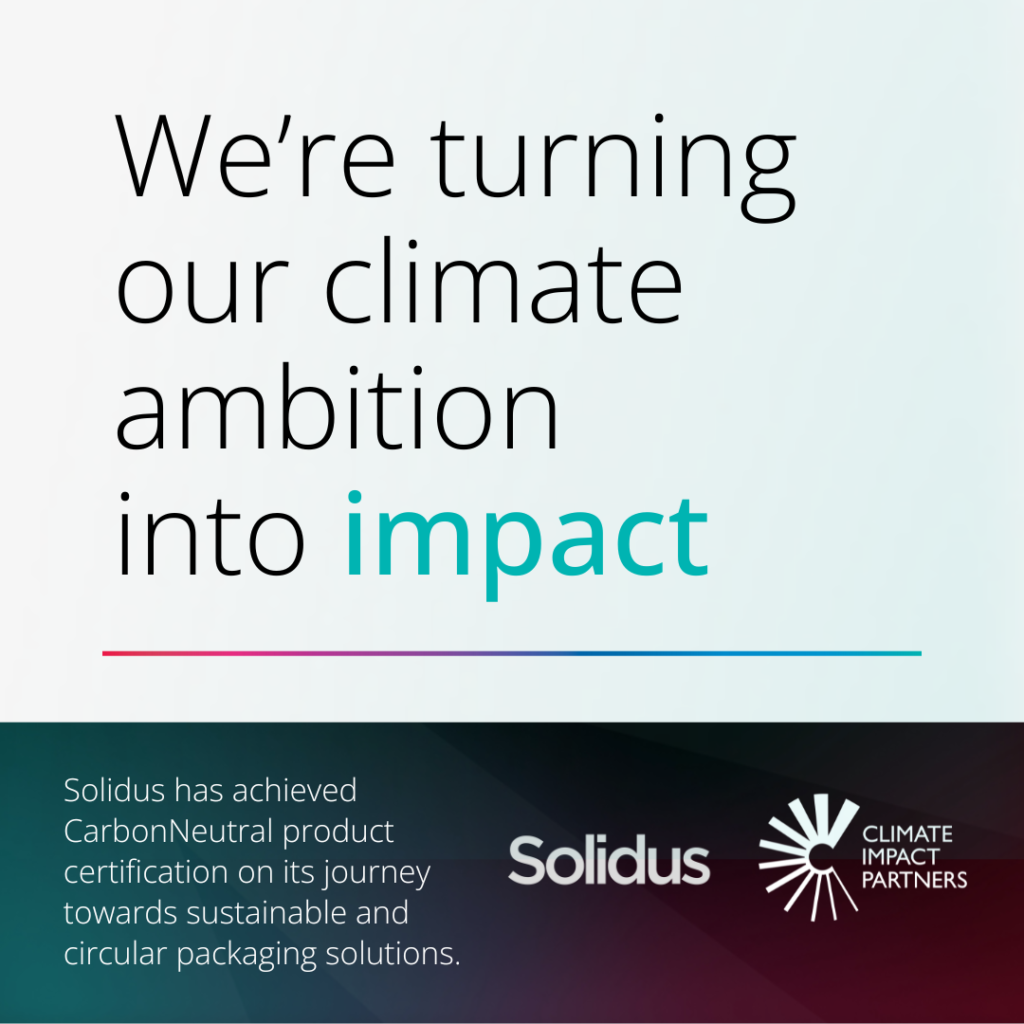
Solidus proudly announces that its Coevorden Solid Board has achieved CarbonNeutral® product certification, a landmark achievement in its journey towards sustainable and circular packaging solutions. This certification is a result of Solidus’ commitment to reducing its carbon footprint and supporting customers in achieving their climate goals through innovative, circular and sustainable packaging materials.
The Solidus Coevorden mill (the Netherlands) has transitioned to renewable biomass energy to significantly reduce its reliance on fossil fuels. The small residual emissions are then offset through the purchase of verified carbon credits, ensuring the production of CarbonNeutral® product certified boards that comply with the rigorous standards of The CarbonNeutral Protocol.
Jesse Rep, Head of Sustainability at Solidus, commented:
“Achieving CarbonNeutral® product certification for the Coevorden Solid Board demonstrates Solidus’ leadership in sustainability and our dedication to providing innovative solutions that help our customers reduce their carbon footprints. This milestone reflects our commitment to making a meaningful impact in the fight against climate change while delivering value to our customers and their end consumers.”
Solidus partnered with Climate Impact Partners, a leader in carbon market solutions for climate action, to ensure the certification process adhered to globally recognized standards. By integrating carbon neutral board products into its portfolio, Solidus empowers brands and retailers to align with their ambitious climate commitments.
Katie Meikle, Client Solutions Account Executive at Climate Impact Partners stated:
“Solidus’ CarbonNeutral® product certified boards are a testament to the value of credible carbon neutrality initiatives. This product sets a benchmark in sustainable packaging, enabling companies to offer low-carbon solutions that resonate with environmentally conscious consumers and drive positive change in the industry.”
With sustainability at the core of its operations, Solidus is also pursuing its broader climate target of a 50% reduction in absolute CO₂ emissions by 2030, compared to 2019 levels. This ambitious goal underscores the company’s dedication to environmental stewardship.
The CarbonNeutral® product certified solid board from Coevorden is now available for customers looking to enhance the sustainability of their packaging offerings. By choosing Solidus’ solutions, brands can reinforce their own climate commitments while contributing to a more sustainable and circular future.
Get CarbonNeutral® solid board for a greener future
The post Solidus Coevorden Solid Board achieves CarbonNeutral® product certification appeared first on Solidus.
Solidus appoints new CEO and Chairman 10 Mar 2025, 10:06 am
Groningen, Monday 10 March 2025 – Solidus, a global leader in solid board and solid board packaging, announces the appointment of Niels Flierman as its new Chief Executive Officer (CEO). Flierman brings over two decades of experience in the paper industry. In addition Dermot Smurfit, an industry pioneer with a track record of successful transformations, steps in as Chairman of the Supervisory Board.
Niels Flierman has a proven track record of leading large-scale operations through transformation, operational improvement process, lean manufacturing, and sustainability initiatives. His expertise in driving performance will be instrumental as he will lead the announced full strategic and operational review to improve the company’s results and accelerate future growth. With a more focused strategy, a rationalized cost base, new capital, and significantly lower debt, Solidus has ample opportunity to benefit from a strong position as a specialized market leader in attractive international market segments.
As Chairman of the Supervisory Board, Dermot Smurfit brings over 40 years of experience in the paper and packaging sector, with deep industry knowledge and a strong track record of successful transformations. His expertise will be instrumental in guiding Solidus through this critical phase.
The post Solidus appoints new CEO and Chairman appeared first on Solidus.
Solidus strengthens financial position and future prospects with additional investment under financial restructuring and new ownership 26 Feb 2025, 9:20 am
Groningen, Wednesday 26 February 2025 – Solidus (the “Company”), a leading specialist in solid board and solid board packaging, announces a financial restructuring to improve the Company’s financial health. In addition, Solidus will undergo a full strategic review to strengthen its go-forward operations.
A group of leading financial institutions representing the majority of the Company’s senior lenders (collectively, the “Investor Group”) have agreed to inject new capital into Solidus, and convert most of its preexisting debt to equity, thereby significantly reducing leverage and strengthening the future prospects of the Company.
Under the transaction, the Investor Group will become majority owners of the Company. Solidus’ current owner is fully cooperating in transferring its ownership to the Investor Group. The transaction will be concluded in the coming weeks, subject to the fulfillment of customary conditions.
Strategic review
In addition to the financial restructuring, Solidus will undertake a full strategic and operational review in effort to restore the Company’s performance and drive future growth. With a more focused strategy and rationalized cost base in combination with new capital and significantly lower debt, Solidus has ample opportunity to benefit from a strong position as a specialized market leader in attractive international market segments.
Dialogue with social partners
Management and the Investor Group maintain a constructive dialogue with the Works Council and unions throughout the process and the upcoming strategic review.
The post Solidus strengthens financial position and future prospects with additional investment under financial restructuring and new ownership appeared first on Solidus.
What is circular packaging? 21 Feb 2025, 10:40 am
The packaging industry is undergoing a transformation as sustainability and circularity become top global priorities. As consumers demand more sustainable options and regulations tighten, circular packaging has become essential to sustainable business practices. But what does circular packaging actually mean and why is it essential for the future of packaging?
Defining circular packaging
Circular packaging moves away from the traditional ‘make, use, dispose’ model by focusing on designing materials for continuous use. This helps to eliminate waste and make the best use of resources. A key aspect is using sustainable materials, such as renewable or recycled inputs, to reduce environmental impact. This approach aligns with global sustainability trends, such as using more recycled content to cut down on virgin resources. Another important factor is creating packaging that lasts longer and can be reused, using innovative designs to extend material life cycles and rethinking standard packaging methods.
To close the loop, circular packaging relies on efficient recyclability to ensure materials can be returned to production, supporting a truly circular economy. By reducing emissions and conserving resources, it strives for a minimal environmental footprint, in line with international initiatives such as the European Green Deal to promote resource efficiency and reduce waste across all industries.
The circular economy connection
Circular packaging is a cornerstone of the circular economy, a model that aims to replace the traditional take-make-waste approach. This regenerative framework aims to decouple economic growth from resource consumption, promoting sustainable cycles of production and consumption.
Through circular packaging, industries can:
- Reduce dependence on finite natural resources by prioritising recycled materials.
- Reduce greenhouse gas emissions, as recycled materials can require less energy to produce than virgin materials.
- Minimise waste by designing products that can be reused or recycled, rather than discarded for incineration or even landfill.
The European Union’s Circular Economy Action Plan (CEAP) is one of the driving forces behind this shift, encouraging businesses to adopt circular principles throughout their operations.
Benefits of circular packaging
For consumers
- Environmental impact: Circular packaging meets the growing demand for sustainable products, enabling consumers to make more sustainable choices.
- Improved safety and quality: Innovations in materials and design improve food safety, extend shelf life and reduce spoilage, directly benefiting the end consumer.
- Transparency: Labelling and information associated with circular packaging builds trust by communicating sustainability efforts
For businesses
- Cost efficiency: Circular packaging reduces long-term costs by optimising material use, recycling and transportation.
- Regulatory compliance: Compliance with EU regulations (see below) helps businesses avoid penalties and remain competitive.
- Market differentiation: Companies that adopt circular packaging can position themselves as sustainability leaders, enhancing brand reputation.
- Reduced carbon footprint: Circular packaging designs can significantly reduce the impact of a brand’s overall carbon footprint.
Tackling Scope 3 emissions in packaging
Scope 3 emissions are indirect greenhouse gas emissions from a company’s value chain, such as those caused by suppliers, customers or the use and disposal of the company’s products. They are among the most difficult to address, but represent a significant opportunity for positive impact. For packaging, these emissions come from activities such as raw material production, transportation and disposal. It is estimated that packaging contributes up to 20% of a brand’s total carbon footprint.
How to reduce Scope 3 emissions
- Material selection: Choose recycled materials that require less energy-intensive production processes.
- Efficient design: Space-efficient packaging reduces transport emissions.
- Supplier collaboration: Engaging suppliers to adopt sustainable practices and provide transparency on emissions data supports better decision making.
- Life cycle assessments: Understanding the total environmental impact of packaging through life cycle analysis can identify opportunities to reduce emissions.
By addressing Scope 3 emissions, companies can meet regulatory requirements and consumer expectations while demonstrating sustainability leadership.
Learn more about Solidus’s efforts to address Scope 3 emissions.
The role of legislation
The European Union has set ambitious targets to accelerate the shift towards sustainability. Circular packaging is central to achieving these goals. Key legislative frameworks include:
- Packaging and Packaging Waste Regulation (PPWR): Aims to ensure that all packaging in the EU is reusable or recyclable by 2030, with targets to reduce waste and increase recycling rates.
- Circular Economy Action Plan (CEAP): Introduced as part of the European Green Deal, this plan focuses on creating a sustainable product policy framework that encourages the reuse of resources.
- Single-Use Plastics Directive (SUPD): Aims to reduce plastic waste, particularly in the marine environment, and promote the use of alternative materials.
Understanding these frameworks is crucial for businesses looking to future-proof their operations. Brands that comply with these regulations will avoid legal challenges and benefit from improved efficiency and consumer trust.
Circular packaging is more than a trend – it is a necessity. It addresses global challenges such as resource scarcity, climate change and waste management, while delivering tangible benefits to businesses and consumers. By embracing circular principles, companies can reduce their environmental footprint, comply with evolving regulations and meet the growing demand for sustainable practices.
Solidus can help you stay ahead in the evolving packaging landscape with circular packaging solutions tailored to meet your needs. Contact us now to explore how we can drive your packaging innovation forward.
The post What is circular packaging? appeared first on Solidus.
Solidus & Koppert Cress: Collaborating on future-proof sustainable packaging 14 Jan 2025, 8:35 am
Solidus and Koppert Cress have joined forces to develop sustainable packaging solutions aimed at reducing the carbon footprint, improving recyclability and maintaining the high quality of Koppert Cress products.
In a recent podcast episode, Jesse Rep, Head of Sustainability at Solidus, gave an insight into how the partnership between the two companies began. With its expertise in sustainable packaging, Solidus has contributed to the development of future-proof and circular packaging for Koppert Cress.
Koppert Cress, known worldwide for its microgreens and edible flowers, supplies top chefs and has a strong focus on sustainability and circularity. This commitment extends beyond sustainable cultivation methods to environmentally friendly packaging choices. By working with Solidus, Koppert Cress ensures that its packaging not only protects its products, but also contributes to a more sustainable world.
Sustainable packaging and circular processes
At Solidus, circularity is at the heart of everything we do. “Our packaging is made of solid board, which consists of more than 90% recycled paper and can be recycled up to 25 times,” explains Jesse. This makes it a perfect fit for Koppert Cress, which strives to minimise waste for its end customers.
The partnership has resulted in tailor-made packaging solutions specifically designed to protect and display Koppert Cress’ delicate products. By choosing Solidus’ sustainable packaging, Koppert Cress not only guarantees the quality of its products, but also ensures optimal moisture resistance, which helps to preserve the freshness of these fragile items.
From plastic to renewable cardboard: the collaboration with Koppert Cress
The collaboration between Solidus and Koppert Cress focuses on the transition from plastic to cardboard packaging, with sustainability and functionality as top priorities. The Solidus Techno Centre has used its expertise to replace plastic packaging with a renewable cardboard alternative. This new packaging offers a 75% reduction in CO2 emissions compared to its plastic counterpart and is more practical for chefs and consumers. After use, the cardboard can be easily recycled through the paper and cardboard recycling stream, which has a recycling rate of over 80% across Europe.
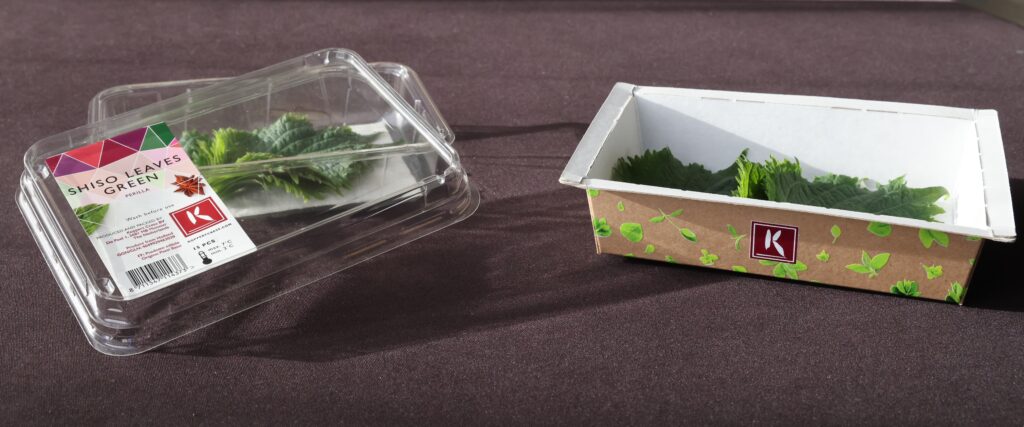
The development of these packaging solutions has been an iterative process. The Solidus Techno Centre provided several prototypes that Koppert Cress tested in real-life scenarios, including professional kitchens. Feedback from chefs and restaurant staff helped to refine the design, resulting in packaging that is not only more sustainable, but also perfectly tailored to the needs of the end user.
Innovating together, supported by the Solidus Techno Centre
The ambitions of Solidus and Koppert Cress go beyond their current achievements. The companies are committed to continuing their collaboration to further improve the sustainability of packaging. The Solidus Techno Centre has developed innovative solutions, including fully fibre-based packaging that offers similar moisture barrier properties to plastic alternatives. These fully renewable packages are free of fossil-based materials and offer an alternative to several other packaging materials.
Solidus and Koppert Cress demonstrate how packaging innovation can contribute to a more sustainable future for both the environment and end users. Their collaboration proves that sustainability and functionality can go hand in hand.
For more insights into the partnership with Koppert Cress, listen to the full podcast:
- On Spotify (in Dutch): https://open.spotify.com/episode/0tdIZ7O9xQVP35f5WbwXUj
- On YouTube (with English subtitles): https://youtu.be/Fqjae4Jpzak
The post Solidus & Koppert Cress: Collaborating on future-proof sustainable packaging appeared first on Solidus.
EU packaging waste legislation: What businesses need to know going into 2025 10 Jan 2025, 9:13 am
With stricter packaging requirements effective as of 2025, companies must align their practices with evolving regulations, including the Packaging and Packaging Waste Regulation (PPWR).
The regulations will require a more holistic packaging approach moving forward, incorporating circular economy principles, such as sustainable design, material choice, reuse potential and end-of-life recycling.
A closer look at the new packaging regulations
The updated PPWR introduces significant changes to packaging material selection, aligning with the Circular Economy Action Plan (CEAP) and the EU’s commitment to waste reduction and keeping materials in circulation. Businesses are legally required to adopt sustainable and circular packaging practices.
Key updates include:
- Stricter rules on the recyclability and reusability of packaging materials.
- Ambitious targets for reducing unnecessary and single-use packaging.
- Enhanced Extended Producer Responsibility (EPR) obligations, requiring businesses to take accountability for their packaging’s entire lifecycle.
Solidus is already well-prepared and ahead of the curve with its commitment to sustainability and use of circular materials.

Industry-specific insights: addressing unique challenges
The impact of the EU’s packaging waste legislation varies across industries, with each facing distinct challenges and opportunities:
- Food and Beverage: Compliance often requires transitioning to renewable and food-safe materials. Fibre-based innovations are becoming essential for packaging fresh produce and single-use items, offering solutions that meet industry safety and sustainability standards.
- E-commerce: With a strong focus on minimizing over-packaging, businesses are exploring renewable materials and reusable shipping solutions to reduce costs and achieve recyclability targets without compromising functionality.
- Healthcare: The need for sterility and safety adds complexity to adopting sustainable materials. However, advances in recyclable fibre-based packaging are helping the sector navigate these challenges while maintaining compliance with strict standards.
By understanding these sector-specific dynamics, businesses can tailor their strategies to meet regulatory requirements while improving operational efficiency and sustainability.
Why act now?
The 2025 deadline for the EU’s packaging waste legislation is imminent. Businesses that delay action risk falling behind, facing penalties, or encountering operational disruptions. Transitioning early to materials like paper-based packaging, increasingly used to replace plastics in soft fruit packaging, can ensure compliance while addressing consumer demand for sustainability.
Starting early can also lead to cost savings, as lightweight, recyclable materials streamline production and reduce waste management expenses. Additionally, adopting sustainable practices—such as lowering single-use plastics– enhances brand reputation and builds trust with sustainable-minded consumers.
How to prepare your business
Preparing for the EU’s packaging waste legislation is more than a compliance task—it’s an opportunity to adopt smarter, more sustainable practices. Start by evaluating your current packaging processes to identify where recyclable or circular materials can replace traditional options.
Collaboration plays a crucial role in finding these solutions. Partnering with experts in packaging design and innovation can help give you tailored solutions that meet the new regulatory requirements and reduce your environmental footprint.
By adopting circular design principles and working with industry specialists, businesses can ensure their packaging aligns with the new guidelines while enhancing efficiency and sustainability.
Looking ahead: future trends
The 2025 packaging waste legislation marks a significant shift, but it is just the beginning of the EU’s journey toward sustainability. Businesses should prepare for emerging trends and innovations that will reshape the packaging landscape in the coming years:
- Smart Packaging: Technological advances are enabling the development of intelligent packaging solutions. These include QR codes and sensors that track packaging life cycles, optimize recycling, and provide valuable data on material usage. Such innovations enhance operational efficiency and align with consumer demand for transparency and accountability.
- Reusable Packaging Solutions: As e-commerce grows, demand for reusable packaging systems increases. These solutions, particularly in retail and food delivery sectors, reduce waste and offer a cost-effective alternative to single-use materials.
- Regulatory Evolution: Beyond 2025, the EU may expand its bans on single-use plastics and introduce stricter standards for carbon footprint reporting. Companies that adapt now will be better positioned to navigate these evolving regulations.
By staying informed about these trends and adopting forward-thinking solutions, businesses can maintain a competitive edge, meet evolving consumer expectations, and contribute to a more sustainable future.
Building a sustainable future
Adapting to the 2025 EU packaging waste regulations is not just about compliance—it’s about future-proofing your business and embracing innovation to support a circular economy.
Solidus is a proactive partner that can help you comply with evolving packaging waste legislation with innovative solutions tailored to your needs. Contact us here to learn more.
The post EU packaging waste legislation: What businesses need to know going into 2025 appeared first on Solidus.
How Solidus supports the UN Sustainable Development Goals: A commitment to a sustainable future 24 Oct 2024, 9:06 am
Sustainability is at the heart of Solidus’ business. In line with the United Nations’ 2030 Agenda for Sustainable Development, we are dedicated to help creating a healthier planet. The 17 Sustainable Development Goals (SDGs) of the UN provide a framework for tackling global challenges like climate change, resource management, and social inequality. Solidus is actively contributing to five of these goals through various initiatives across the business.
Sustainable Development Goals (SDG) 6: Clean water and sanitation
The first of the Sustainable Development Goals we highlight at Solidus, SDG 6, emphasises the importance of clean water and sanitation for all.
Solidus’ mills are strategically located in water-rich regions to be able to produce cardboard, but as a company we recognise the critical importance of managing water as a finite and essential resource. We are committed to minimising our water footprint and protecting local water bodies.
We use water-efficient processes and equipment, such as closed-loop systems and automated controls, which significantly reduce our water consumption. Solidus is committed to proactive water management, promoting responsible water use and addressing water-related challenges through continuous monitoring and reporting. In our facilities equipped with anaerobic water treatment systems, wastewater is treated efficiently and biogas is generated as a by-product. This biogas serves as a sustainable energy source onsite, effectively replacing the equivalent amount of natural gas.
In this video you can learn more about our anaerobic water treatment systems:
SDG 7: Affordable and clean energy
Another goal is affordable and clean energy, which is essential for global development.
Solidus invests in sustainable energy, including the installation of 7,000 solar panels at our Oude Pekela plant in the Netherlands. This investment has significantly reduced our carbon footprint and supports a clean energy transition.
SDG 12: Responsible consumption and production
Responsible consumption and production are essential in addressing the climate crisis. Each stage of production or manufacturing is an opportunity to reduce the use of resources and fossil fuels, promote innovation, save energy, reduce emissions and promote a circular economy.
At Solidus, circularity is key: over 90% of the fibres we use are recovered paper, mainly sourced locally. These fibres can be recycled up to 25 times, reducing waste and lowering our carbon footprint.
Part of Solidus’ mission is to combat waste, especially food waste. The inventive structural designs of our solid board packaging preserve the protective properties of packaging, including food contact barrier properties, while reducing waste and resource use. These approaches not only reduce environmental impact, but also deliver cost savings and operational efficiencies for our customers.
SDG 13: Climate action
Urgent climate action is needed to tackle the ongoing climate crisis. Climate records were broken in 2023, highlighting the need for immediate action to reduce greenhouse gas emissions and achieve net zero emissions by 2050.
At Solidus, we are committed to combatting climate change and reducing carbon emissions throughout our value chain. We have set a specific climate target to reduce absolute CO2 emissions by 50% by 2030.
Our Coevorden mill is a testament to our commitment to move towards carbon neutral cardboard production. The mill is close to being fossil-free thanks to a symbiotic steam supply agreement with a neighbouring company, which converts a wood waste stream into heat.
This approach makes the Coevorden mill a leader in the paper and packaging industry. Using biomass energy for a more sustainable and future-proof production process supports customers’ needs for low-carbon packaging materials.
SDG 15: Life on land
Finally, the last Sustainable Development Goal Solidus is working on is ‘Life on land’, which focuses on restoring and promoting the sustainable use of terrestrial ecosystems, sustainably managing forests, combating desertification, halting and reversing land degradation and halting biodiversity loss.
Solidus’ solid board products are PEFC or FSC® certified (FSC-C023739). By using PEFC or FSC® certified products, we can assure our clients and end users that the products we make are produced in accordance with this sustainable method of forest management.
In addition, Solidus has planted thousands of trees as a Christmas gift to our customers in recent years. In partnership with Trees for All, we have planted forests both in the Netherlands and in central Vietnam. By planting trees, Solidus contributes to the restoration of biodiversity, giving plants and animals the opportunity to thrive again.
The Sustainable Development Goals are important for building a better world. Solidus is motivated to continue working on these SDGs. Through our commitment to sustainability, we are actively contributing to a healthier planet.
Interested in more sustainability news? Read our stories here.
The post How Solidus supports the UN Sustainable Development Goals: A commitment to a sustainable future appeared first on Solidus.
Sustainable fish packaging: Solidus’ contribution to World Maritime Day 26 Sep 2024, 12:19 pm
Thursday 26 September is World Maritime Day. This day is held annually to focus attention on the importance of shipping safety, maritime security and the marine environment.
At Solidus, we help improve the marine environment by providing sustainable packaging solutions. Our fully recyclable packaging helps reduce plastic pollution while ensuring safe and efficient transport of fresh fish.
About World Maritime Day
World Maritime Day was established by the International Maritime Organisation (IMO) to highlight the importance of shipping safety, maritime security and the marine environment.
International shipping is responsible for transporting over 80% of global trade, including essential food supplies such as fish, making it the most efficient and cost-effective method of international transport for most goods. However, as global trade increases, so does the amount of plastic waste and other environmental challenges that directly affect our oceans. Promoting sustainable shipping and maritime development has therefore become one of IMO’s top priorities for the coming years.
Solidus’ commitment to sustainability
Solidus believes in sustainability as it is central to its key business. From natural and recyclable materials to an optimised production process: we are always striving to improve our efficiency and lessen the environmental impact of our actions and products. We recognise the role of packaging and its impact on the environment. That’s why all of our packaging solutions are fully recyclable. Solidus packaging is made from renewable materials that support circularity, combat climate change and reduce waste in the fibre-based packaging value chain. Fibres can be recycled up to 25 times before losing their strength properties.
Fish packaging
Our solid board is the ideal material for the packaging of fish. It is an environmentally friendly and sustainable alternative to traditional polystyrene and plastic crates. Solid board is 100% recyclable and made from renewable resources.
Our solid board packaging is very reliable during transport. Its strength allows the boxes to be stacked securely, minimising the risk of damage. This makes it the ideal solution for fish packaging during sea transport, maximising logistical efficiency and ensuring products arrive safely.
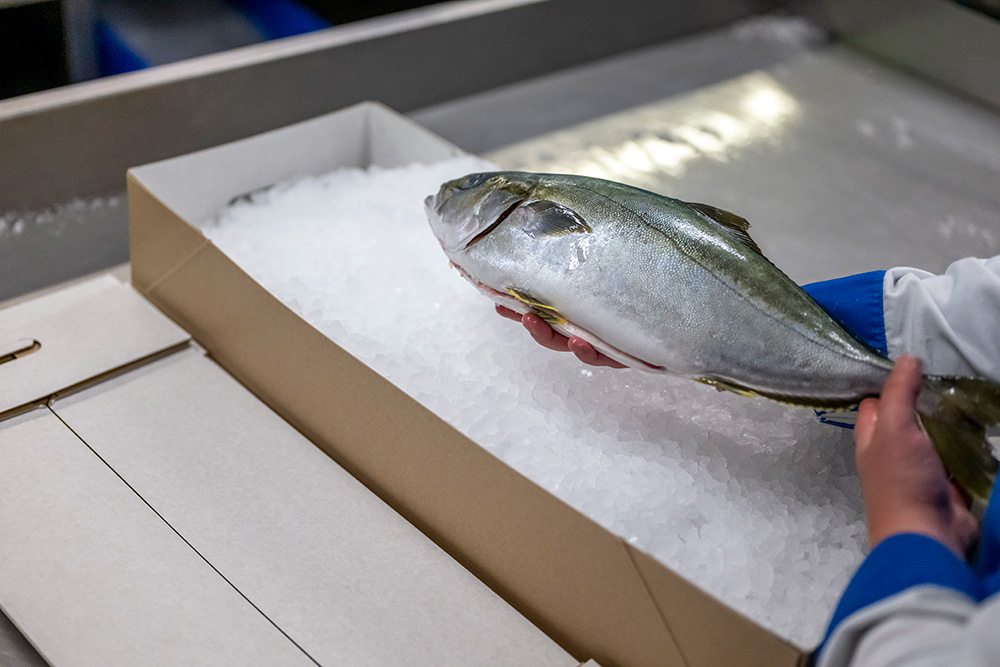
Our fully recyclable packaging helps reduce plastic pollution while ensuring safe and efficient transport of fresh fish. By replacing traditional polystyrene fish boxes with our sustainable solid board packaging, we actively contribute to reducing plastic waste in the oceans, further supporting the goals of World Maritime Day.
Attendance at Conxemar
If you’re interested in finding out more about our sustainable fish packaging, we invite you to visit us at Conxemar 2024. This exhibition for the fish industry takes place from 1-3 October in Vigo, Spain. Solidus will be showcasing its solutions for the specific needs of fish packaging, including our innovative Futurline®. Our team of experts will be on hand at stand 1C15 to answer your questions and present our wide range of sustainable solid board fish packaging solutions.
Want to get your free entrance ticket for the show? You can get your free badge here.
The post Sustainable fish packaging: Solidus’ contribution to World Maritime Day appeared first on Solidus.
Custom packaging boxes: the essential guide 26 Jul 2024, 8:11 am
In today’s competitive market, the right custom packaging can make all the difference, elevating your brand and ensuring your products arrive in perfect condition. When it comes to custom packaging, understanding the journey from design inception to final delivery is crucial. This blog will uncover how Solidus skillfully assists clients through each phase, ensuring that the final product is high-quality and functional and aligns with our strong sustainability principles.
Key advantages and design principles for custom packaging solutions
Custom packaging boxes offer several benefits that extend beyond basic containment, enhancing brand experience, ensuring product safety, and providing specialized features tailored to specific needs:
- Brand experience: Custom packaging strengthens brand identity with high-quality printing, vibrant colors, and unique designs. Using sustainable materials appeals to eco-conscious consumers and sets your brand apart in the market. This approach fosters customer loyalty and word-of-mouth marketing by highlighting your unique selling points.
- Product-specific design: Tailored features like ventilation holes for freshness, reinforced corners for durability, and transparent lids for visibility ensure packaging meets each product’s specific functionality and safety requirements
- Protection: Custom boxes, using advanced materials, offer robust protection against damage and spoilage, extending the product’s shelf life and maintaining quality.
Designing custom packaging requires careful consideration of functionality, aesthetics, material selection, and logistics to create durable, visually appealing, and efficient packaging solutions that align with brand values and consumer expectations:
- Functionality and protection: Packaging should be durable and shield against environmental elements like moisture and air, preserving food quality. The correct size minimizes material waste and enhances usability.
- Visual appeal and customization: Eye-catching colors, prominent logos, and advanced printing techniques are excellent for communicating essential product information and enhancing brand presence. Tailored designs will resonate with target audiences, boosting market impact.
- Logistics and cost efficiency: Evaluating the packaging’s ability to protect products during transit and reduce potential returns will ensure cost efficiency. Investing in quality packaging can lower long-term costs by preventing damage.
- Material selection: Choosing materials that offer durability and protection and comply with food safety standards will support environmental sustainability. This includes moisture-resistant liners and robust materials for heavy products.
- Consumer preferences: Custom packaging should be designed for easy handling, opening, and resealing, so it’s important to consider the product’s storage needs and how the packaging enhances the consumer experience, combining convenience with aesthetic appeal.
- Sustainability: Consumer demand for sustainability is reshaping the packaging industry by pushing companies to adopt practices that are environmentally friendly. Sustainable packaging materials directly contribute to reducing a brand’s environmental footprint by minimising waste and reducing resource consumption. This not only benefits the planet but also aligns with the increasing expectations of shareholders and investors who are focused on ESG criteria. Solidus’ custom packaging solutions represent a 360 degree approach to the increasing demand for sustainable and circular packaging.
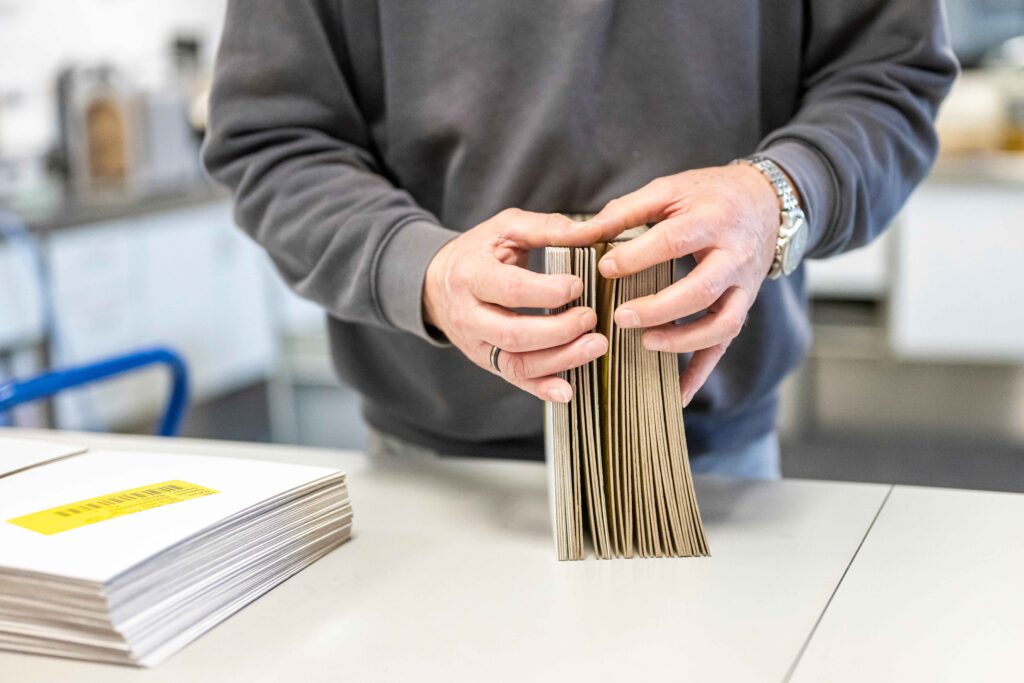
Types of custom packaging boxes
Custom food packaging is meticulously designed to cater to the specific requirements of different sectors, blending functionality with aesthetic appeal across various categories:
- Transport packaging: These ensure product integrity during transit and include bases and lids for stability and protection, machine erected trays for automated high-volume production needs, hand erected trays for flexible packaging of specialty items, and pot plant trays, which are specifically designed to protect horticultural products. Each solution is tailored to the logistical demands of different products, ensuring safe and efficient transport.
- Retail packaging: These solutions enhance preservation, presentation, and retail profitability and include Modified Atmosphere Packaging (MAP), which prolongs freshness; skin packaging, which reduces movement and enhances shelf appeal; punnets, which protect and display small fruits and vegetables; and traycompacts®, which is suitable for direct food contact of greasy products like smoked salmon.
- Foodservice packaging: Our carbon-neutral Bag-in-Box solution is ideal for packaging and dispensing liquids like oils, beverages, and other liquid-based industrial products. The solid board exterior protects the contents from damage and light exposure while also providing great branding opportunities.
Each packaging type is developed with precise attention to detail, ensuring that it meets the practical demands of safety and efficiency and aligns with consumer preferences and brand aesthetics. This strategic approach to custom packaging aids brands in differentiating themselves in a crowded marketplace, enhancing visibility and customer engagement.
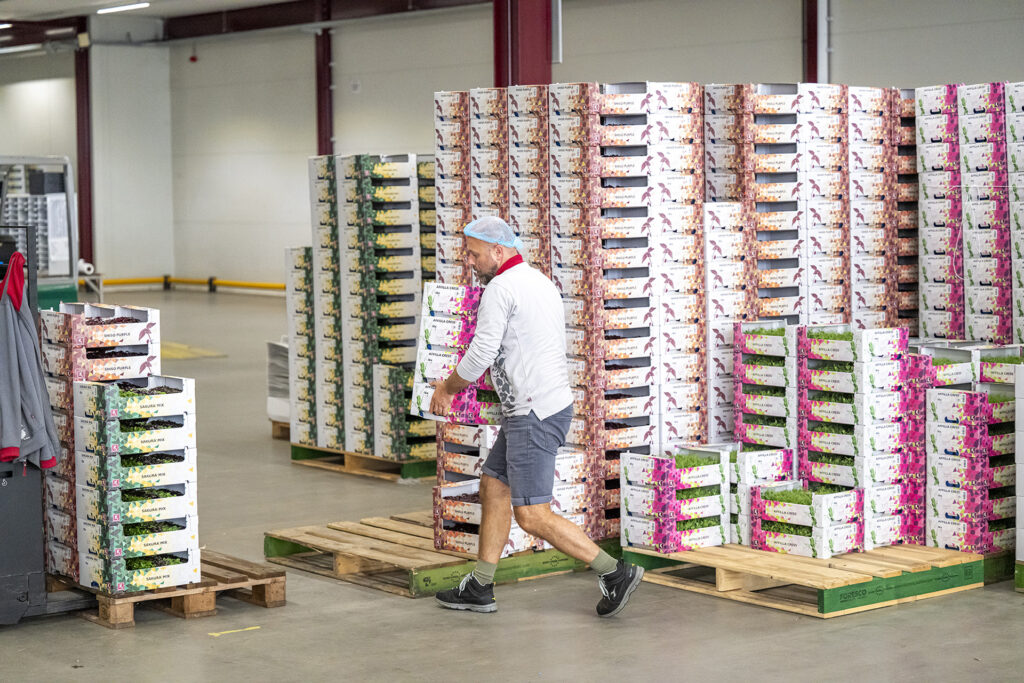
Selecting the right custom packaging box
The process of selecting the right custom packaging box with Solidus involves several well-defined stages, each designed to ensure the highest quality and innovation. In each stage we ensure regulatory compliance (e.g. EPR waste tax calculations, food safety, recyclability, LCA and shelf life testing). Here’s a breakdown of this process:
- Research & Analysis: Solidus closely works with clients to analyze specific needs, assess product details, and define problems to identify areas for improvement.
- Conception: Solidus’s team of experts conceptualizes viable solutions tailored to the market in workshops and development sessions, merging these ideas into the best combinations for client needs.
- Prototyping & Development: This stage advances the best concepts into tangible prototypes. Solidus rigorously refines these prototypes to unleash their full potential, ensuring only the most effective designs proceed to production.
- Production: Solidus oversees the entire process of transforming prototypes into final products, from material selection to the final manufacturing stages. We use circular fibres in our production process to ensure consistency and high standards, reflecting our commitment to circular economy principles.
- Turnkey Solution: Solidus focuses on refining products and delivery methods. Our packaging materials are designed to be fit for purpose and future-proof. They provide solutions that streamline the client’s operations and enhance the packaging’s functionality and presentation.
This structured approach ensures that every custom packaging solution developed by Solidus not only meets but exceeds client expectations, emphasizing functionality, sustainability, and market appeal. Solidus’s commitment to innovation, quality and regulatory compliance like the Packaging and Packaging Waste Regulation (PPWR) is evident throughout each phase, from initial research to the delivery of turnkey solutions.
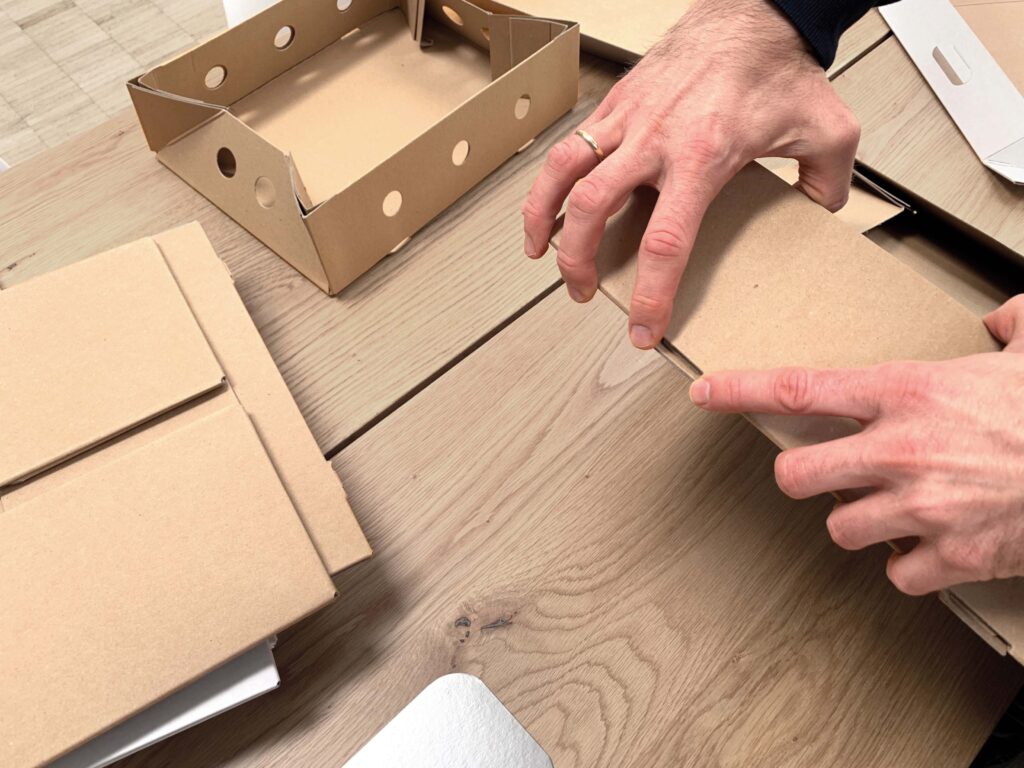
Discover the process of selecting the perfect custom packaging box and how Solidus can assist you.
The post Custom packaging boxes: the essential guide appeared first on Solidus.
Plastic Free July: 5 ways to reduce your use of single-use plastics 19 Jul 2024, 8:16 am
Here at Solidus, while you know we’re all about sharing the great attributes of solid board packaging, there’s no denying that plastic has its part to play in our world. In fact, plastic can definitely be useful for packaging a variety of everyday items. However, at the same time, it is well documented that reducing our consumption of single-use plastics is a simple step in helping to reduce our individual environmental impact.
Did you know that, according to the United Nations Environment Programme (UNEP), about 430 million tons of plastic is produced yearly? One-third of this total takes the form of single-use plastics, which humans interact with for seconds or minutes before discarding and not reusing again.1 As a brand committed to circularity, sustainability and taking part in the race against waste, we at Solidus understand the importance of finding ways to reduce our reliance on disposable plastic items. So, with Plastic Free July well underway, we’ve got some tips to help you reduce, reuse and recycle – and keep those good, sustainable packaging habits up all year long!
How can you help reduce plastic waste?
Here are five simple ways to join us in our efforts to reduce single-use plastic usage:
- Use a reusable water bottle: one of the easiest ways to reduce your use of single-use plastic is to use a reusable water bottle. Plastic bottles are one of the leading contributors of microplastics in our water supply. Whether you’re at home, at work, or on the go, having a durable water bottle that you can refill and reuse can significantly reduce the amount of plastic you consume and perform a step in the fight against microplastics in our waters.
Did you know that as Solidus we once donated to the organization Join the Pipe, by ordering branded reusable water bottles? With the proceeds of those kinds of donations, Join the Pipe funds drinking water and clean-up projects in developing countries. The same as we do, Join the Pipe believes the real solution for the amount of plastic pollution is a reuse community, which was an important factor for us as Solidus why we supported this particular initiative. Read here which other sustainability projects we performed as Solidus over the last years.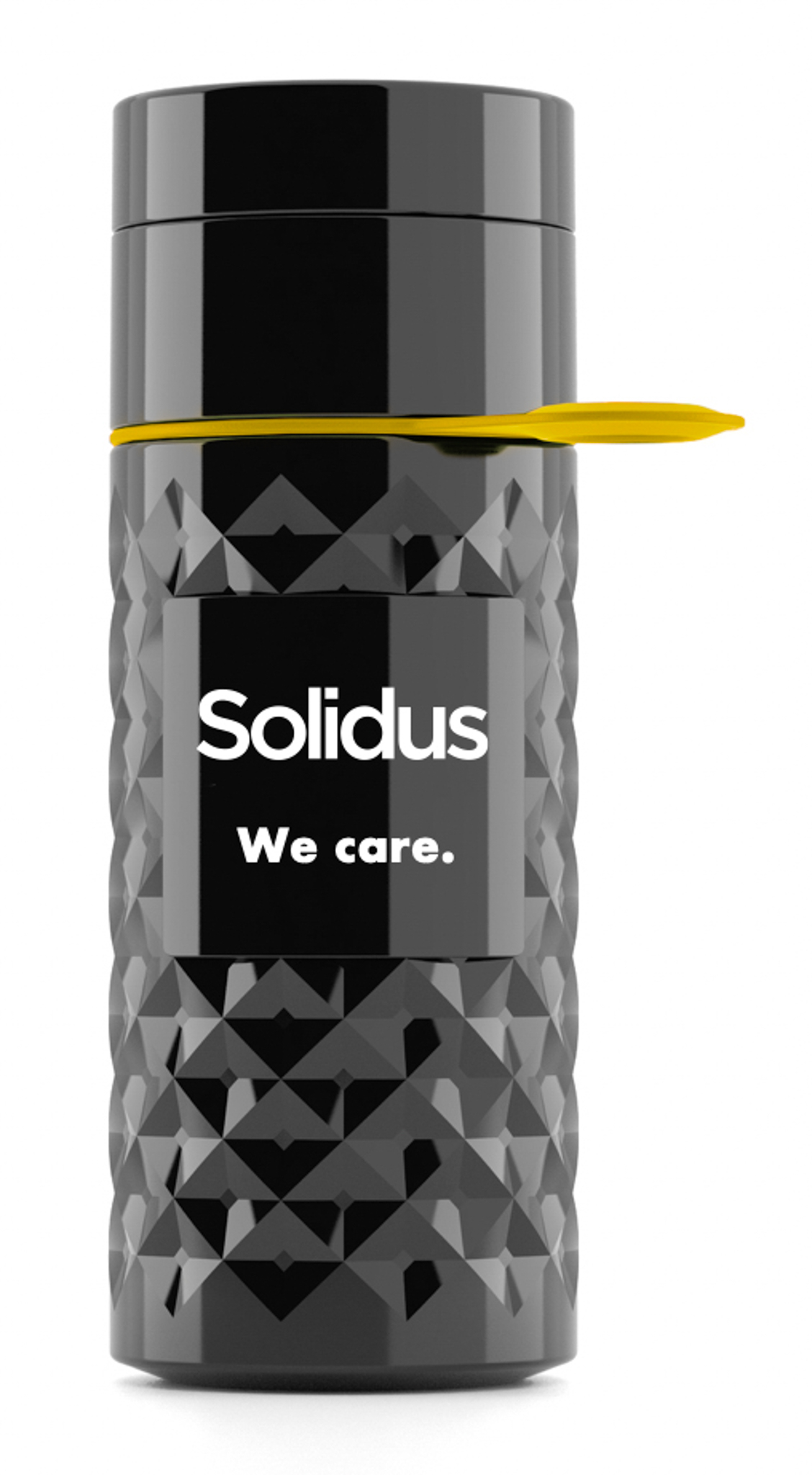
- Reduce, reuse, recycle: reducing and reusing single-use plastic where you can is a great start. And if you do need to throw plastic packaging away? Just remember to recycle wherever you can. While some forms of plastic packaging can be tricky to recycle at home, you might be surprised at just how much can be taken away via your local kerbside collection.
- Do not use plastic straws: the amount being spent on disposable drinking straws has been rising year on year for the past two decades. And although the estimates for exactly how straws are used each year and how many end up in the environment are tricky to confirm, what’s clear is that plastic straws get everywhere. For example, they are found in huge numbers in beach clean-ups around the world. In the meantime, a lot of investigation is being done about plastic straw alternatives and for example many fast food establishments have switched to paper straws as a disposable alternative.
- Replacing single-use plastic with reusable fibre-based packaging: replacing plastic with fibre-based materials certainly has its challenges. Changing packaging for improved sustainability purposes starts with understanding both your sustainability priorities and the conditions the package will be exposed to throughout the supply chain. The right partner can help you recognise what’s truly needed, then design a package that meets your sustainability goals and holds up well through the supply chain. At Solidus, we work closely with customers and other partners to understand these requirements, including testing that replicates use situations and supply chain necessities.
Although sustainable packaging design is a challenge, one certainty is, that fibre-based packaging has a much higher recycling rate in regards to plastic, implying fibre-based materials are already sustainable on itself. As fibre-based packaging is mostly sourced from responsible managed forests that are PEFC and FSC® certified, it is sourced from renewable wood pulp (processed into kraft paper) or recycled cardboard material, meaning it has a high recycling rate (83% collected for recycling in Europe), whereas plastic only collects 41% for recycling (half versus paper and cardboard). Solidus is also a 4Evergreen member, supporting the 90% recycling target for fibres by 2030. 2
- Raise awareness: after adopting these new behaviours mentioned above, commit to informing your family, friends and colleagues by alluring them to do the same. If everyone made an effort to limit their plastic consumption and adopted alternative and sustainable solutions, we would certainly contribute to a cleaner world with less waste. Help us spread these 5 good practices, share the article and let’s work together to protect the environment!
- https://www.technologyreview.com/2023/10/12/1081129/plastic-recycling-climate-change-microplastics/#:~:text=Only%209%25%20of%20the%20plastic,enter%20the%20ocean%20each%20year
 ︎
︎ - https://www.statista.com/statistics/1072637/recycling-of-municipal-waste-in-the-eu-by-material/
 ︎
︎
The post Plastic Free July: 5 ways to reduce your use of single-use plastics appeared first on Solidus.